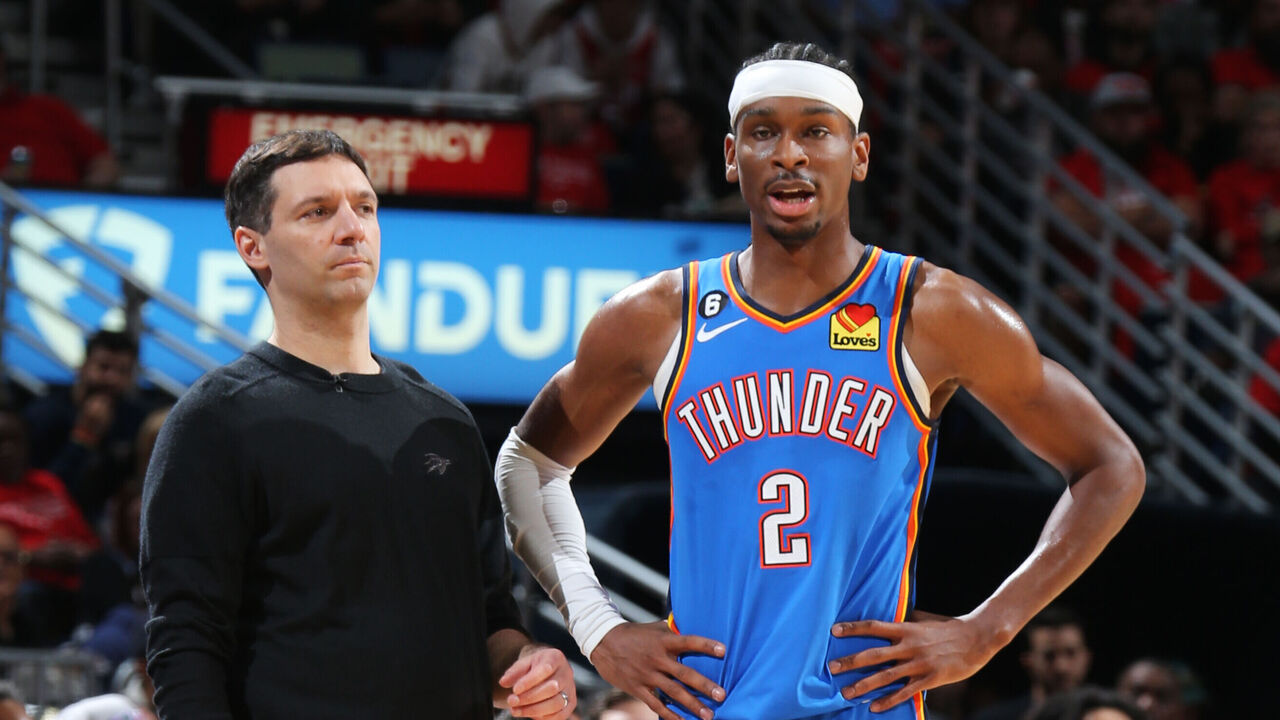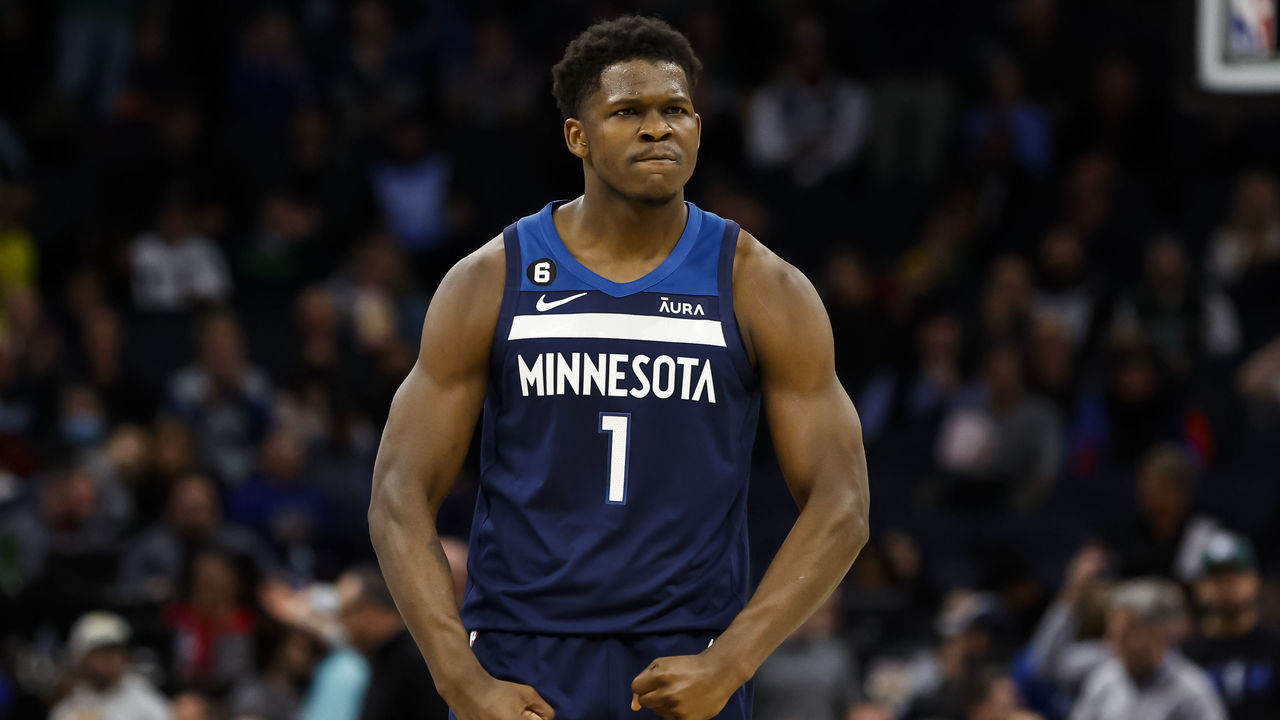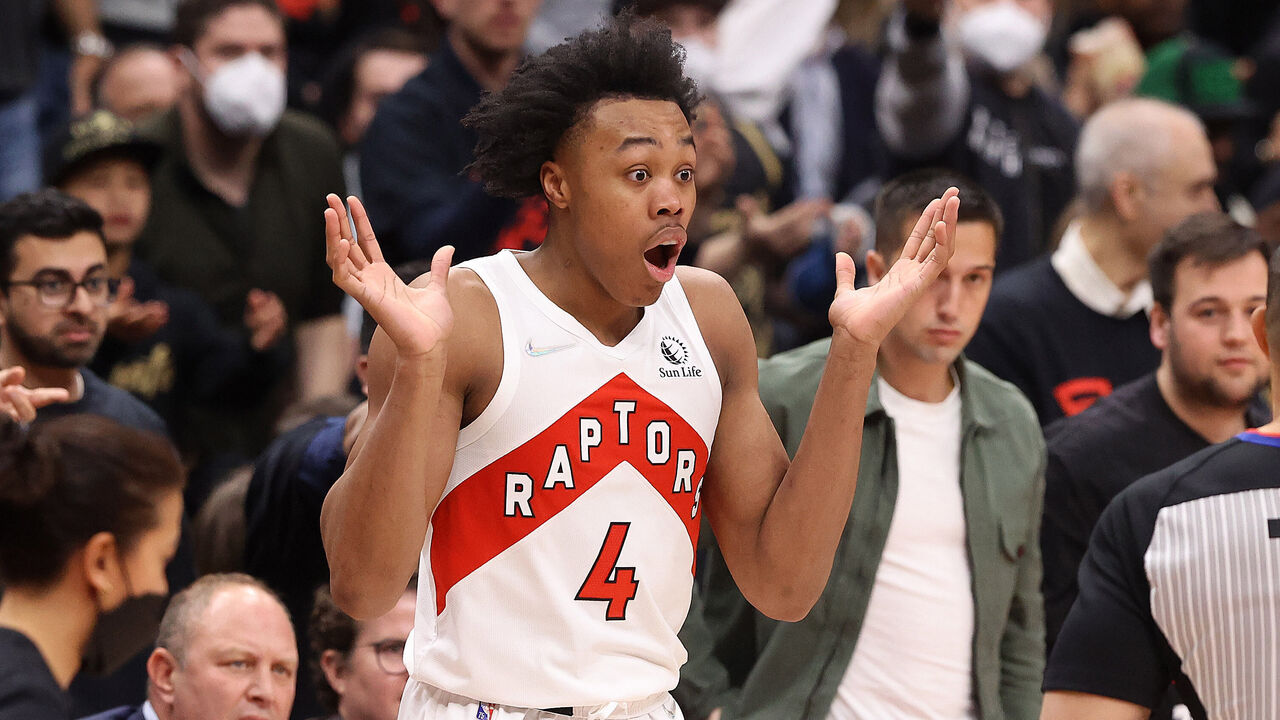Using recent trends to analyze which NBA draft prospects are likely to succeed
Eight years ago, Jahlil Okafor was drafted third overall. This year, a similarly lumbering post-up player wouldn’t be a first-round pick. Since that 2015 NBA Draft, only nine players shorter than 6-foot-3 have been taken in the top 30. It’s clear the needs of teams have drastically changed.
With nearly every new prospect representing a different version of the same thing – some blend of versatility and size – it can be nearly impossible for teams to determine who’s likely to pop and who’s destined to flop. By looking through a few key recent trends, this analysis is meant to indicate who may be poised to rise to the top of this year’s rookie crop.
Production vs. potential
One of the biggest considerations for draft evaluators is the age-old debate between production and potential. No prospect is made the same, but most candidates typically fall under two categories: players who’ve produced at a high level in college and have been drafted with the hope their play translates to the NBA; or unproven, typically younger players with elite tools and flashes of brilliance who carry less of a track record.

In this study, we break down past lottery picks who clearly fall into these two categories and sort them by their effectiveness within their draft class. The metric used throughout this research is Value Over Replacement Player. VORP is an all-encompassing stat meant to calculate the contributions an NBA player brings to a box score in comparison to the average player. Though it’s not a perfect statistic, every league MVP since 2006 has ranked in the top three.
Non-top-5 lottery picks who averaged over 18 points per game in college since 2017, sorted by draft class VORP rank
Average rank: 39
Lottery picks who averaged 12 points per game or less in college since 2017, sorted by draft class VORP rank
Average rank: 23
It’s worth noting we avoided top-five picks for players who averaged over 18 points per game, as many of those candidates were seen as surefire selections and have gone on to find predictable success.
Focusing on guys intertwined in the same draft range, it’s evident the players with less production have a greater outlook. Not only is their average VORP 16 spots higher, but two of the lower-ranked players, rookies Sharpe and Sochan, had strong finishes to the campaign and are candidates to shoot up the rankings in future seasons. A clear trend among the first group is a lack of defensive ability, while in many cases, players in the latter group have had more of a chance to play through offensive mistakes due to immense defense.
Also notable in the second group is the existence of one of a few special traits that are transferable between college and the NBA. Barnes ranks second in his class in assists. Duren ranks first in rebounds per game. Jackson, this season’s Defensive Player of the Year, leads his draft class in blocks, while Porter Jr. is first in 3-point percentage. While many of the higher-producing college players had gaudy stats as amateurs, pure scoring ability is a tough element to shift over to the pros, as younger players generally begin their career with smaller roles than they’re used to.
Iowa’s Kris Murray (20.2 points per game) is the only player in this year’s draft who meets the upper group’s criteria. Shooting just 33.5% from deep and posting a defensive rating over 105 could push him into the same boat as those who’ve come before. On the other side, Jarace Walker (rebounding), Cason Wallace (perimeter defense), Dariq Whitehead (shooting), and Dereck Lively (rim-running) all produced lower point totals in college but bring an elite skill that will earn them an NBA role from Day 1. Our research shows they have a greater chance at succeeding in the league. Lively is the most interesting case – his 5.2 points per game at Duke would be the lowest scoring output by a lottery pick in over 20 years.
Can bad shooters become good shooters?
As the NBA continues to grow more reliant on 3-point shooting, one would assume the draft’s top prospects would all be knockdown shooters, but at first glance, that isn’t the case. Certain No. 1 pick Victor Wembanyama, clear top-3 selection Scoot Henderson, and top-10 locks Amen and Ausar Thompson all shot below 30% from deep this year.

There is one major caveat with those numbers – Wembanyama and Henderson both shot over 75% from the free-throw line, with the 7-foot-5 Frenchman topping out at nearly 83%. Meanwhile, the Thompson twins both failed to top the 70% mark. That fact makes some sense, considering Wembanyama is seen as one of the draft’s better shooters, while shooting is seen as a major flaw for the Thompsons.
It is often perceived that prospects who struggle to shoot from beyond the arc but make free throws at a high rate are likelier to eventually turn into solid shooters. Using amateur and NBA data, we aimed to either prove or debunk that theory.
Players who shot above 72% from the free-throw line but below 30% from 3-point range in their final year before the NBA since 2019
Average difference: +8.0%
Players who shot below 70% from the free-throw line and below 30% from 3-point range in their final year before the NBA since 2019:
Average difference: -2.0%
After scouring through the last four drafts, there is unquestionably a correlation between college free-throw shooting and future NBA 3-point success. A lot of the first group’s struggles are circumstantial. Ball, Maxey, and Edwards were all seen as good shooters as prospects but were all given massive offensive roles at a young age and struggled with efficiency. Others, like Jaylin Williams and Little, used their promise as shooters from the charity stripe to become respectable beyond the arc.
The latter group paints a very clear picture. All of Okoro, Banton, Barnes, and Sochan were drafted as long, athletic players with defensive chops and burgeoning playmaking skills, with a bet they’d turn into decent shooters down the road. That archetype fits the Thompson twins in many ways, though their athleticism pops in a way the others players’ doesn’t. Claxton is an outlier as someone who took a fair amount of threes in college and stopped soon after entering the NBA due to inefficiency. Even taking his numbers out of the mix, the other four’s NBA 3-point differential sits under 1%.
This study bodes well for Wembanyama and Henderson and causes concern for the Thompson twins, but it can be applied to other prospects as well. Julian Phillips is uber-athletic and a terrific defender but is predicted to go in the second round after shooting just 23.9% from deep at Tennessee. However, his sparkling 82.2% mark from the line could signify tons of potential as a shooter. Meanwhile, Alabama forward Noah Clowney and UConn wing Andre Jackson are both first-round hopefuls who didn’t display shooting prowess from three or the charity stripe.
How important are measurables?
Outside of shooting, there may not be a factor looked at as closely by teams as physical measurements. In a league where versatility is everything, having the size to play multiple positions at both ends is key. As a result, teams tend to value players with optimal length and can turn a blind eye to the others.

In order to assess just how valuable prospects with elite size are, we analyzed where the best players in each draft class ranked among their peers at the combine in standing reach. A happy medium between height and wingspan, standing reach paints a broad picture of the impact measurables have on success. It’s also worth mentioning that some of the draft’s top players don’t participate in the combine, eliminating some potential data points. This was especially prevalent in 2020 due in part to the pandemic.
Top-3 VORP leaders among combine participants in each draft since 2017, sorted by standing reach percentile
Average: 45th percentile
Bottom-3 in VORP among combine participants picked in the first round of each draft since 2017, sorted by standing reach percentile
Average: 50th percentile
Somewhat surprisingly, no correlation was found between being a more effective player and measuring well in standing reach. In fact, the draft class’ worst players on average measured better than the most productive ones. Despite registering a lower average, the five best testers in standing reach at their position all came from the top players. However, seven of the nine worst testers came from that same group. Meanwhile, there is virtually no connection between good or bad measurements and being a bust – there were low-VORP players who measured in every 10th of percentile from the 80s down to single digits.
According to these findings, elite measurements can lead to a better prospect, but some of the league’s biggest successes were overlooked due to their lack of size. After all, each of the five best marks in standing reach from the top group were picked in the top 15, but only two of the five worst marks were lottery picks.
Santa Clara guard Brandin Podziemski could potentially be overlooked in this year’s draft due to his smaller stature. Despite putting up unparalleled stats and performing extremely well at the combine, teams and scouts are slightly hesitant to buy in to his measurements, including a fourth percentile standing reach. On the flip side, Pepperdine guard Maxwell Lewis is generally ranked in the exact same range as Podziemski but put up worse numbers on a significantly worse team in the same conference in college. This is in large part due to his elite length, as he registered the best standing reach among all guards at the combine.
Is age really that big of a deal?
The final element of our study, draft age, relates to a trend seen for the last several years. The prevailing logic is that a younger player should have longer to develop before they reach athletic peak than an older one, who has had more time to grow into their current form. This has played out in nearly every draft, especially near the top. Only three players selected in the top five since 2014 have been older than 21, while nine have been under 19.

A typical defense against drafting older players is that their careers often peak early, and younger draftees inevitably catch up over a few years of development. Therefore, in order to properly determine the production from the oldest and youngest selections over the last six seasons, we laid out their performance on a year-by-year basis to see any growth or decline over time. The threshold for a campaign was 30 games played. Players who suited up in fewer due to injuries were given an “N/A” designation, while players who appeared in fewer due to demotion or being out of the league entirely were given a “DNQ.”
VORP percentile within own draft class in each season from the three oldest first-round picks in every draft since 2017
VORP percentile within own draft class in each season from the three youngest first-round picks in every draft since 2017
There’s plenty to digest in these tables. Most notably, the three oldest players in each first round placed in a higher percentile in VORP in each year of their careers, peaking in Year 2 and never falling below the 47th percentile. On the flip side, the collective of youngest players never topped the 47th percentile, and their peak shockingly came in their rookies seasons despite being the youngest members of the entire NBA.
There’s a trend evident in the bottom table when it comes to draft slot. Outside of this past season’s rookies, all five players who registered a campaign in the upper quarter of their draft class were picked in the top six. Those players also account for all four of the All-Star selections. Meanwhile, all nine players drafted between 2017-2021 picked below No. 6 failed to hit that upper-quarter mark, with seven of them ranking in the bottom 10% of their class in at least one season. By comparison, the first grouping had just one player chosen in the top six, but six non-rookies outside that range ranked in the top quarter of their class despite being picked eight spots lower on average.
While it does make sense that the youngest players have more bust potential, it’s extremely alarming that no one outside of the top picks carved out effective careers. It spells trouble for someone like South Carolina’s GG Jackson, the upcoming draft’s youngest player, who’s seen as a potential late first-round pick after struggling as a reclassified freshman last season.
There are no All-Stars in the collection of oldest players, but the clear trend is that the ones who are enjoying successful NBA careers are those who were ready to play from Day 1. Every player who surpassed the 75th percentile did it for the first time in his rookie campaign. Looking at this year’s class, Ben Sheppard and Jordan Hawkins are both 21-year-old sharpshooters with size who could fit the bill, while do-it-all guard Colby Jones could provide a similar impact to guys like Derrick White or Josh Hart.


